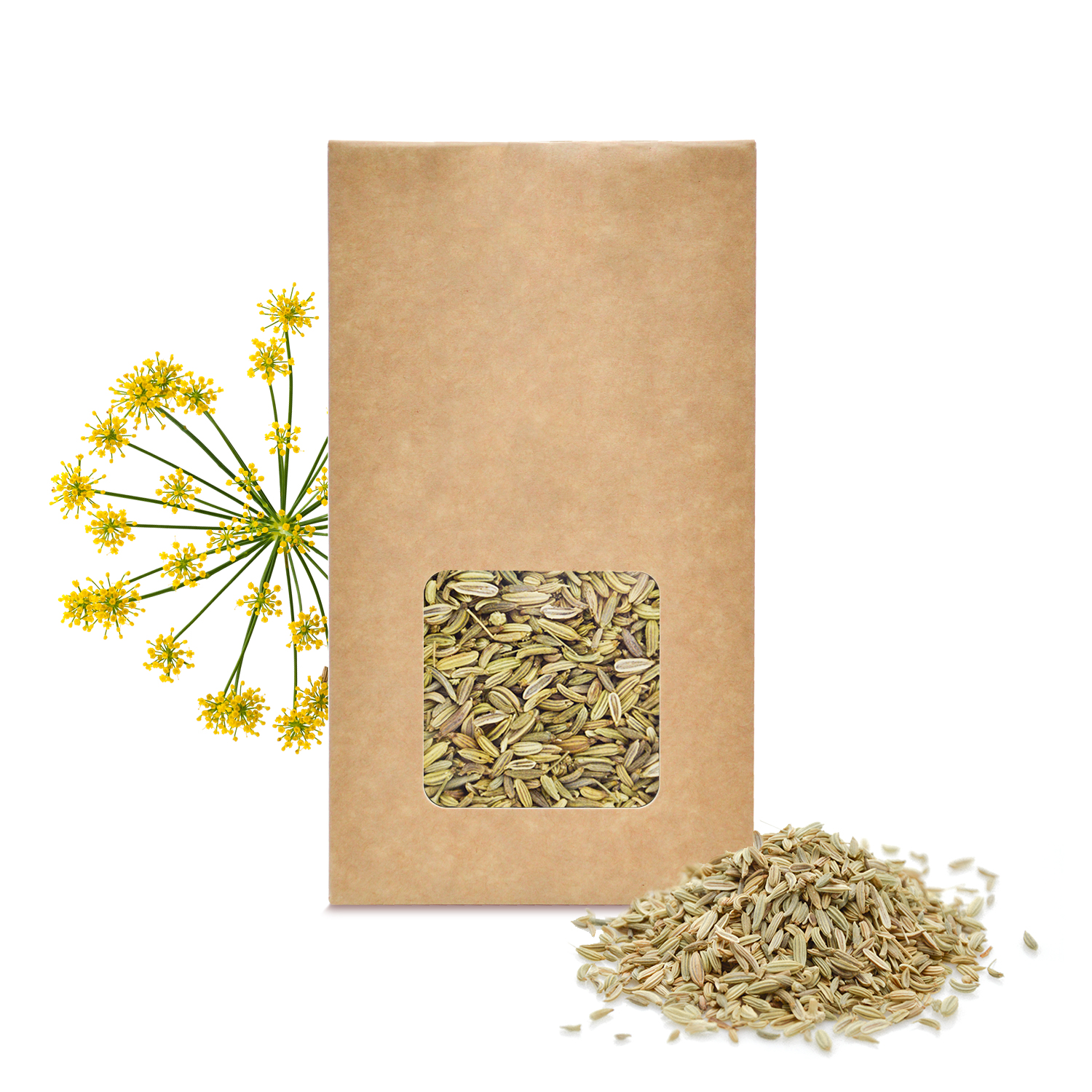
Fennel is best known for its action on the digestive sphere, in cases of dyspepsia or flatulence in particular, but it can act on other levels. Its seeds are galactogogues, helping to promote lactation in lactating women. Latin name: Foeniculum vulgare Mill. Part used: seeds.
This article was updated on 19/07/2023In case of' Aerophagia, bloating, flatulence
Consume preferably after meal(s).
Recommended modes of use
In infusion
Pour 1 teaspoon of seeds per cup of hot water. Leave to infuse for 5 to 10 minutes then filter. Drink 2 to 3 cups per day.
Plants often associated
In case of' Difficult breastfeeding
Recommended modes of use
In infusion
Pour 1 teaspoon of seeds per cup of hot water. Leave to infuse for 5 to 10 minutes then filter. Drink 2 to 3 cups per day.
Plants often associated
In case of Colitis
Recommended modes of use
In infusion
Pour 1 teaspoon of seeds per cup of hot water. Leave to infuse for 5 to 10 minutes then filter. Drink 2 to 3 cups per day.
Plants often associated
In case of Dyspepsia, Difficult digestion, Digestive disorders, Digestive spasms
Consume preferably after meal(s).
Recommended modes of use
In infusion
Pour 1 teaspoon of seeds per cup of hot water. Leave to infuse for 5 to 10 minutes then filter. Drink 2 to 3 cups per day.
Plants often associated
In case of Colic
Recommended modes of use
In infusion
Pour 1 teaspoon of seeds per cup of hot water. Leave to infuse for 5 to 10 minutes then filter. Drink 2 to 3 cups per day.
Plants often associated
In case of Fatty cough
Recommended modes of use
In infusion
Pour 1 teaspoon of seeds per cup of hot water. Leave to infuse for 5 to 10 minutes then filter. Drink 2 to 3 cups per day.
Plants often associated
In case of Cough, Sore throat
Recommended modes of use
In infusion
Pour 1 teaspoon of seeds per cup of hot water. Leave to infuse for 5 to 10 minutes then filter. Drink 2 to 3 cups per day.
Gargling
Make an infusion or a diluted mother tincture. Let cool if necessary. Use the preparation as gargles.
Plants often associated
Properties and active components
Properties
- carminative
- aperitif
- digestive tonic
- antispasmodic
- antiseptic
- expectorant (fenchone, anethole)
- galactogogue
- anti-inflammatory (flavonoids)
Active components
- Essential oils: anethole, estragol, limonene, alpha-pinene, fenchone
- Flavonoids
- Sterols
- Courmarins
Precautions for use
- For pregnant women or for prolonged use, it is not recommended to exceed 7 g of Fennel seeds per day.
- For the infant, limit yourself to 1 to 2 g of seeds and leave to infuse for 5 minutes then leave to cool or cool. Increase the dose with age.
Botanical
Fennel belongs to the family of Apiaceae. It is a herbaceous plant with smooth, ridged stems measuring 1 to 2 m high, bearing dark green leaves finely cut into strips and provided with a well-developed sheath. THE small yellow flowers form large umbels and bear fruit 1 cm long, elliptical diakenes with projecting ribs. The whitish main root is fusiform. The whole plant gives off an aniseed and sweet flavor.
Originally from the Mediterranean basin, Fennel has developed in Central Europe, Western Asia and America. It is found in places arid or uneducated on limestone soil and along paths. The main world producer of Fennel, which also happens to be its main consumer, is theItaly. The ideal climate for growing Fennel is one mild climate.
Was this article helpful to you?
Average grade: 4.7 ( 25 votes)
Bibliography
Publication: Filliat, P. (2012). Plants of the Apiaceae family in digestive disorders (thesis). Doctoral paper university Joseph Fourier Grenoble, 139p. https://dumas.ccsd.cnrs.fr/dumas-00740660/document
Publication: Badgujar, S.B., Patel, V.V., & Bandivdekar, A.H. (2014). Foeniculum vulgareMill: A Review of Its Botany, Phytochemistry, Pharmacology, Contemporary Application, and Toxicology. BioMed Research International, 2014, 1‑32. https://doi.org/10.1155/2014/842674
Publication: Kooti, W., Moradi, M., Ali-Akbari, S., Sharafi-Ahvazi, N., Asadi-Samani, M., & Ashtary-Larky, D. (2015). Therapeutic and pharmacological potential of Foeniculum vulgare Mill: a review. Journal of HerbMed Pharmacology, 4(1), 1-9. http://herbmedpharmacol.com/Article/JHP_20150526151629
Work : Fournier, PV, & Boisvert, C. (2010). Dictionary of medicinal and poisonous plants of France. Paris, France: Presses de la Cité.
Work : Corjon, G. (2018). Heal yourself with plants. Quitin, France: Jean-Paul Gisserot.
Work : Dubray, M. (2010). Guide to contraindications of the main medicinal plants. La Geneytouse, France: L. Souny.
Work : Fleurentin, J., Pelt, JM, & Hayon, JC (2016). Good use of healing plants. Rennes, France: Ouest-France.
Work : Lieutaghi, P. (1996). The Book of Good Herbs. Arles, France: Actes Sud.
Work : Lousse, D., Macé, N., Saint-Béat, C., & Tardif, A. (2017). The family guide to medicinal plants. Paris, France: Mango.
Work : Lacoste, S., & Lallement, M. (2014). My bible of phytotherapy (HEALTH/FORME) (French Edition) (1st ed.). Éditions Leduc.s.
Work : Pierre, M., & Gayet, C. (2019). My 1,000 phytotherapy prescriptions (BIBLE) (French Edition) (1st ed.). Paris, France: Éditions Leduc.s.
Website : EMA, COMMITTEE ON HERBAL MEDICINAL PRODUCTS (HMPC) (2018). ASSESSMENT REPORT ON FOENICULUM VULGARE MILLER. https://www.ema.europa.eu/en/documents/herbal-report/assessment-report-foeniculum-vulgare-miller_en.pdf
Website : Wolf, A. (2017, April 20). Fennel. Louis Bonduelle Foundation. https://www.fondation-louisbonduelle.org/legume/fenouil/
Website : eFlore Foeniculum vulgare Mill. (nd). Tela Botanica. https://www.tela-botanica.org/eflore/?referential=bdtfx&module=fiche&action=fiche&num_nom=27986&onglet=synthese


